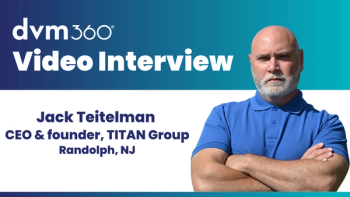
Compassion's fatigue
Considered a high-risk factor for compassion fatigue, euthanasia takes an emotional toll on the entire hospital staff, an expert says.
Considered a high-risk factor for compassion fatigue, euthanasia takes an emotional toll on the entire hospital staff, an expert says.
With shelter staffers reportedly experiencing burnout in one to two-year cycles because of high euthanasia rates and massive volume of feral or unwanted pets, veterinary practices aren't immune from this occupational hazard.
Tracy Zaparanick, LCSW, MSSW and PhD candidate in the College of Social Work at the University of Tennessee has studied compassion fatigue as it relates to euthanasia practices in the shelter environment. While the euthanasia rates are not as high in traditional veterinary practices, the results are still applicable, she adds.
"I, and others, conceptualize compassion fatigue as possessing four elements: primary traumatic stress, secondary traumatic stress, burnout and unresolved grief," Zaparanick explains. "Euthanasia is a high-risk factor contributing to the compassion fatigue condition."
In addition, people in animal-related fields "rarely address or intentionally focus efforts to deal with the aftermath of death/loss they are exposed to during the workday. This usually leads to unresolved grief," she adds.
Dr. Julie Dinnage, director of animal protection medicine with the Massachusetts Society of the Protection of Cruelty to Animals-Angell sums it up this way: "There is no other profession where the person caring for these patients is going to be the same person that euthanizes them. The compassion fatigue in that regard can be very intense in terms of shelter work," she adds.
Euthanasia impacts the entire shelter staff, not just the person injecting the solution. But much of it depends on the context in which the euthanasia is performed, Zaparanick explains. If used to end suffering, then euthanasia is viewed as a gift. For matters of convenience, "it likely becomes very burdensome."
A veterinarian, technician or shelter workers' perceptions of euthanasia are dependent on:
- Their perceived competence in euthanizing.
- Their assessment of why the euthanasia is necessary.
- How they perceive their role in this task.
- Their identification/history with the animal.
- And to what extent they prioritize self-care (activities outside of work).
"I recently heard a shelter director talk about how the rise in gasoline has impacted his shelter. He speculates that financially strapped families are having to make heart-wrenching decisions between gas for transportation and food for their cohabitating nonhuman animal."
— Daniel R. Verdon, Editor
Newsletter
From exam room tips to practice management insights, get trusted veterinary news delivered straight to your inbox—subscribe to dvm360.






